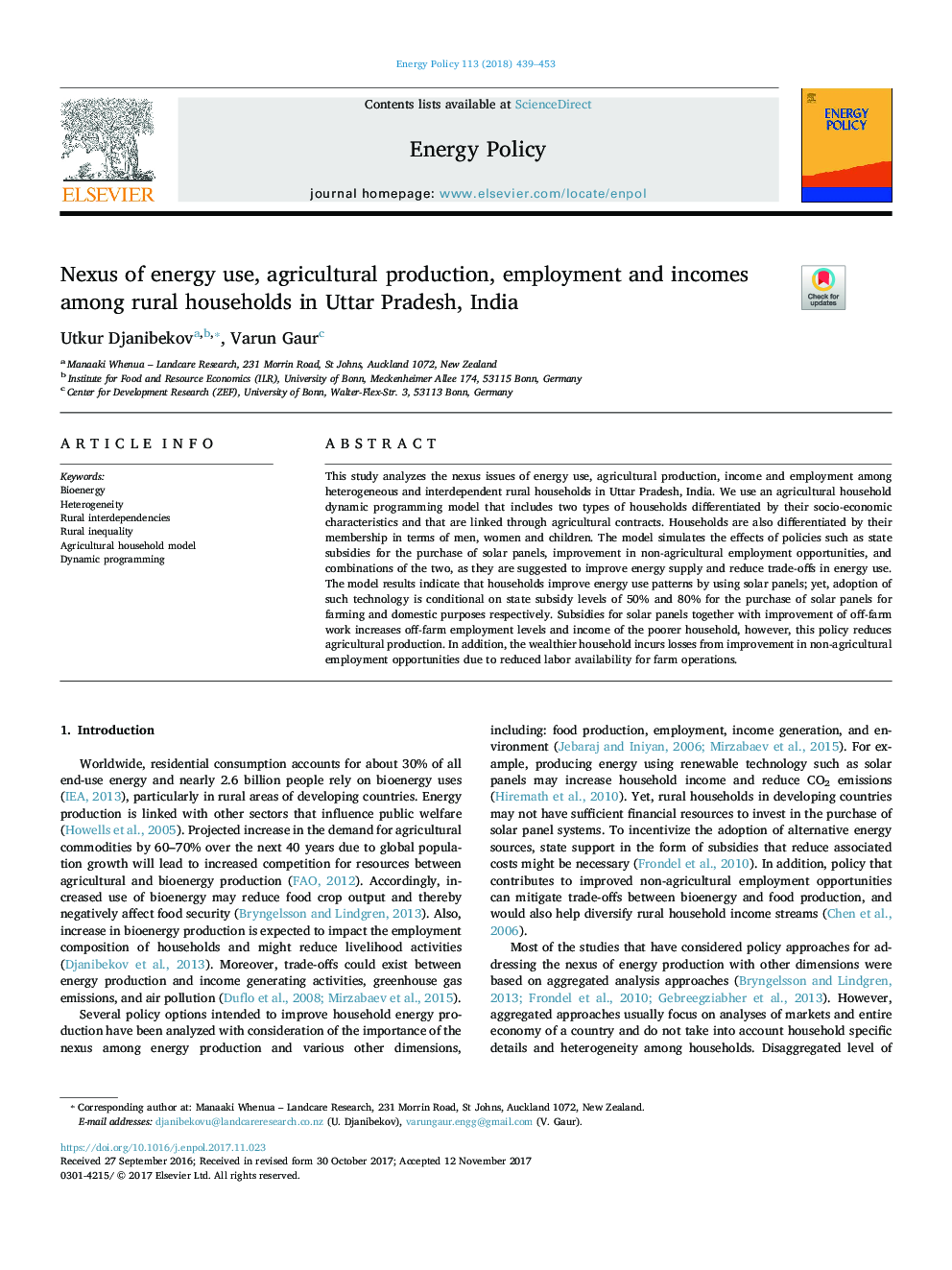| Article ID | Journal | Published Year | Pages | File Type |
|---|---|---|---|---|
| 7398095 | Energy Policy | 2018 | 15 Pages |
Abstract
This study analyzes the nexus issues of energy use, agricultural production, income and employment among heterogeneous and interdependent rural households in Uttar Pradesh, India. We use an agricultural household dynamic programming model that includes two types of households differentiated by their socio-economic characteristics and that are linked through agricultural contracts. Households are also differentiated by their membership in terms of men, women and children. The model simulates the effects of policies such as state subsidies for the purchase of solar panels, improvement in non-agricultural employment opportunities, and combinations of the two, as they are suggested to improve energy supply and reduce trade-offs in energy use. The model results indicate that households improve energy use patterns by using solar panels; yet, adoption of such technology is conditional on state subsidy levels of 50% and 80% for the purchase of solar panels for farming and domestic purposes respectively. Subsidies for solar panels together with improvement of off-farm work increases off-farm employment levels and income of the poorer household, however, this policy reduces agricultural production. In addition, the wealthier household incurs losses from improvement in non-agricultural employment opportunities due to reduced labor availability for farm operations.
Related Topics
Physical Sciences and Engineering
Energy
Energy Engineering and Power Technology
Authors
Utkur Djanibekov, Varun Gaur,
